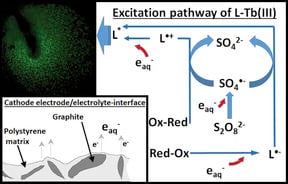Analytical Chemistry

In luminescence techniques, a molecule or an ion is excited by energy from light (photoluminescence), or from a chemical reaction (chemiluminescence), and emits light as it returns to the ground energy level. If the chemical reaction is an electrochemical one, the technique is called electrochemiluminescence (ECL) or electrogenerated chemiluminescence.
The techniques are very sensitive, and the limit of detection in ECL is typically as low as pmol/L or less. A review on modern luminescence methods (S. Kulmala, J. Suomi, Analytica Chimica Acta 500(2003) 21-69) gives an overview of the techniques and their applications. The main research interest in the laboratory of Analytical chemictry is ECL and its applications.
Currently the main topic is electrochemiluminescence applications in bioaffinity assays. Some scientific articles on the subject have already been published. Wood and wood-based materials, such as pulp, have also been studied to find out how different factors in the samples affect their photoluminescence. There are currently no ongoing projects in the laboratory on capillary electrophoresis and gas chromatography, but the students in the laboratory will also get to work with these equipment during their studies.